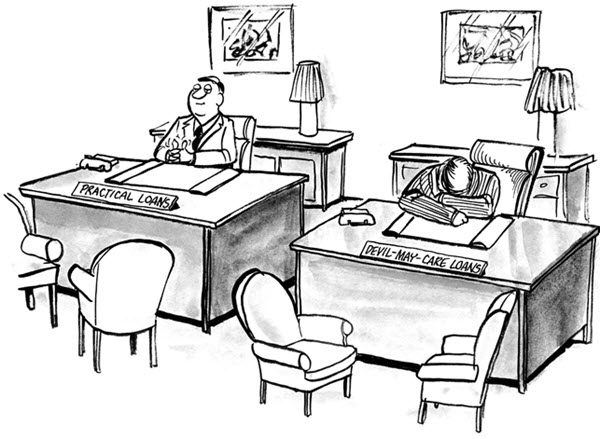Quickly Calculate Your Home Equity Line of Credit Options
Understanding Home Equity
An equity loan is a mortgage in which an individual can borrow money by using real estate as collateral. Equity is the difference between the open market value of the house, minus what is owed on it. This means that if someone owns a home worth $200,000 but they owe $50,000 on the initial mortgage, then they have $150,000 in equity. Most lenders would be willing to finance up to around 75% to 80% loan to value (LTV), which we would be $150,000 to $160,000 on a $200,000 house. Since the person in the above example already owed $50,000 on their original mortgage, that would lower the limit on a home equity loan to $100,000 to $110,000.
The max LTV varies by institution. Some banks and credit unions may allow borrowers up to 85%, 90% or even 95% LTV.
The amount a person can borrow against their home depends greatly on a wide range of factors beyond how much equity they have available. Some other things which may be considered:
- General Market Conditions: When markets contract during recessions banks may become quite selective with who they are willing to loan to. And when markets get frothy banks may fight to gain share loaning to more aggressively to borrowers with weaker credit scores.
- Employment History: If you or your spouse have recently lost your jobs, are self-employed, or have unstable income, then lenders may be more cautious.
- Consumer Credit Score: If you have recently missed some debt payments your FICO score might drop. This in turn can cause you to either be charged higher rates of interest or to not qualify for lending. Repeatedly missing important payments like a mortgage counts more than falling behind a month on a cable or cell phone bill.
- Consumer Debt Profile: If you carry a variety of debts & have a high debt to income (DTI) ratio, that might limit how much a lender will consider prudent to loan.
- The front-end ratio compares the cost of a home's mortgage and insurance against the homeowner's income. Lenders typically want this to be below 28%.
- The back-end ratio compares the cost of servicing all consumer debt payments against a homeowner's income. Lenders typically want this to be below 36%.
Equity vs Unsecured Lending
Generally, the interest rate applied to a HELOC is lower than the rate applied to unsecured loans, like credit card debt. Real estate is used as collateral against the loan, which helps protect the lender's downside risk. It is, after all, rather difficult to disappear with a house, or hide it for that matter. Lenders find that borrowers make these payments a priority when their home is on the line.

Home Equity Loans vs HELOC
A home equity loan is like a second mortgage. The borrower is given a lump sum and the amount is returned with interest over a mutually agreed upon time period.
A home equity line of credit, on the other hand, works like a credit card. It allows the borrower to use from a credit line, up to the amount of the limit. If the loan is repaid, the credit becomes available again. The biggest advantage is that interest is paid only on the amount borrowed and not the whole credit line available. Once it is repaid, there are no further payments to be made. The home equity line of credit can have a draw period of anywhere from five to thirty five years. The repayments can be as small as an interest only payment ending in a single balloon payment at the end of the draw period, or an extended repayment plan can be used.
The problem with the teaser rates & interest-only payments is eventually those terms expire, and when they do some borrowers who didn't run the numbers find they can no longer afford what they once thought was a reasonably affordable payment.
While most conventional mortgages used fixed rates, HELOC typically come with variable or adjustable rates, which means the rates will rise significantly when other indexed base rates like LIBOR or the Fed Funds Rate increase. These adjustable rates may quickly move up as the Federal Reserve tightens, as they are based off of short-term rates. Conventional mortgages are typically far slower at adjusting to shifting rate environments, as they are priced off of the 10-year Treasury Note, which do not move quickly when shorter term rates are adjusted.
Which is Better to Use?
If you have a single large project in mind, then typically home equity loans are the better option, as they offer you a known payment plan and minimal overhead. But if you have irregular or uncertain expenses where you may need to occassionally and repeatedly tap capital, then a HELOC offers greater flexibility. Be aware that while the initial rate may be lower, the rates on lines of credit can adjust upward.
Here are current rates as of January 2016
| Loan Type | Rate | Adjustable? |
|---|---|---|
| home equity loan | 6.20% | no, fixed |
| HELOC | 5.30% | yes |
Where to Find the Best Rate?
Typically credit unions offer more competitive rates than large financial institutions.
Reasonable Uses for Funds
Normally, home equity loans are used for the larger expenses, simply because homes have a very large value to borrow against. Very often, such loans are used to
- remodel or renovate the existing house, particularly kitchen remodeling and other larger expenses like roof repairs and plumbing fixes
- pay for a college education
- finance part of the down payment on a second home
- consolidate unsecured debts which carry a higher interest rates
- or some combination of the above
Unreasonable Uses for Funds
The above uses tend to be somewhat rational uses of capital. Using a HELOC as a liquid funding source ahead of a hurricane can also be a rational move. However some people might spend more frivelously, doing things like going on an extra vacation or paying down credit card debt only to quickly rack up another large credit card balance. Interest on the first $100,000 of equity is tax deductible, regardless of how the funds are used. That limit jumps to $1 million if the funds are used for home repairs and improvements.
When the economy is going well it is easy to believe the good times will last forever, but if one keeps extending the payment term on their house they never know when their job prospects may turn south or a bank may call a loan.
Since borrowing such large amounts of money is serious business and one ends up putting their home on the line, it is important to estimate the monthly payment on the expected loan amount to make sure that the payments will be within one’s budget.

Current State of the Real Estate Financing Market
In 2008 to 2009 there was a global financial crisis driven by declining real estate prices, which were caused by loose landing standards driving real estate into a bubble. After the bubble popped large banks significantly tightened their lending standards while the Federal Reserve purchased over a trillion Dollars worth of lower quality mortgage backed security agency paper at above market rates to remove the bad debt from the financial system. As part of the Federal Reserve's response to the crisis they also engaged in quantitative easing and a zero interest rate policy. These pushed investors out on the risk curve, which in turn drove down rates for other forms of debt - like mortgages. That created a refinance boom which has since subsided.
As tighter lending standards have kept mortgage originations lower than historical norms and the refinance boom has passed, lenders have shifted toward once again pushing home equity loans to more qualified borrowers.
As of the end of 2015 the average borrower received a credit line of $119,790 and banks are fighting to grow this market:
Lenders scaled back on giving out second liens in the wake of the housing downturn, and many cut existing credit lines to avoid new defaults. Some lenders exited the home-equity lending market entirely.
The renewed appetite for these loans comes as property values continue to rise, increasing the number of homeowners who have equity available for withdrawal. Nationally, homes have regained nearly all of the value they lost during the housing bust and are hovering about 5% below their all-time peak in 2006
Equity Calculators
Trying to estimate how much one is eligible to borrow and if that payment is affordable can involve some rather complex calculations. Fortunately, there are many free online calculation tools that make the process simple. These calculators are user friendly and have clear instructions on how to go about using them.
The above tool allows potential borrowers to try different loan combinations to see which option would be best suited to their needs and income. Using it a borrower can quickly see how much money they can borrow, what the repayment amounts will be, and even the tax deductions they will be able to avail.
To use the above tool, enter the loan amount. Next enter the interest rate you hope to pay. Remember to be realistic here, as the rate one wishes to pay may not be the rate they qualify for. Also keep in mind the rate may adjust higher throughout the duration of the loan, so calculate what the potential payments may be if interest rates were to lift significantly. Then choose the time period in which the loan will be paid back. Just keep in mind that the longer the loan period is extended, the more one ends up paying in interest. Finally, just click the calculate button and results will provide an estimated principal and interest payments that will be needed to repay the loan. One can juggle the loan amount and time period to come up with the monthly repayment amount that is affordable to them, but make sure the loan's maximum rate of interest is also an affordable amount.
Potential borrowers should keep in mind that there might be additional costs involved in acquiring the loan. For example, there may be a fee for the property appraisal required to assess the real value of the house, an application fee, closing costs, property and title insurance, mortgage preparation, and filing costs. While a lot of these fees might be waived during the loan negotiations, some of the costs will not.
Since taking out a home equity line of credit line places one’s home on the line, it is essential that all costs and calculations are thoroughly researched before making a commitment.
